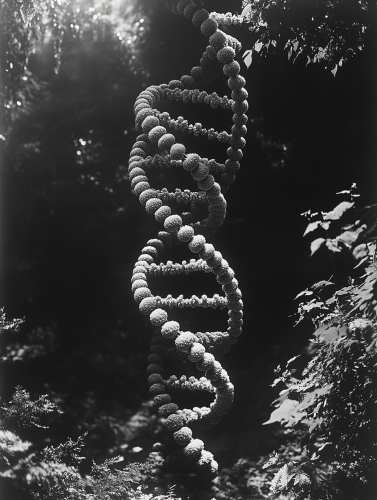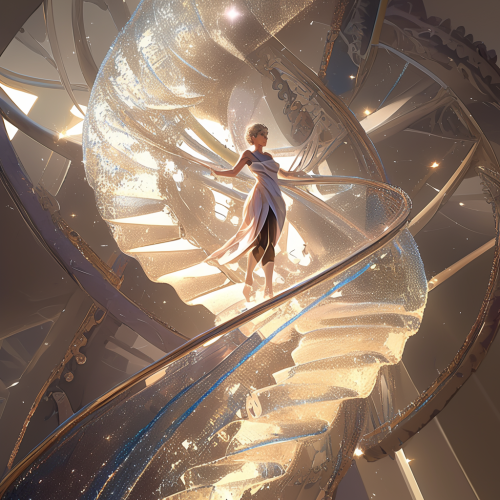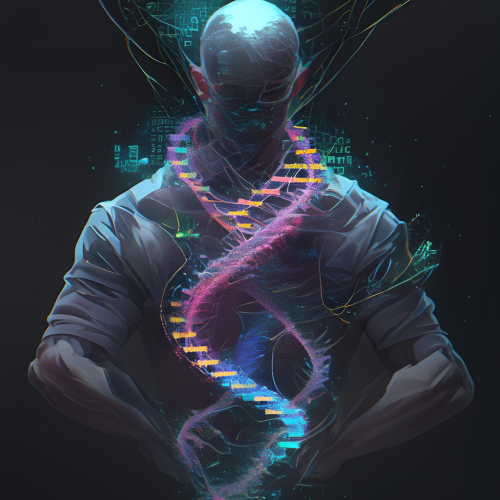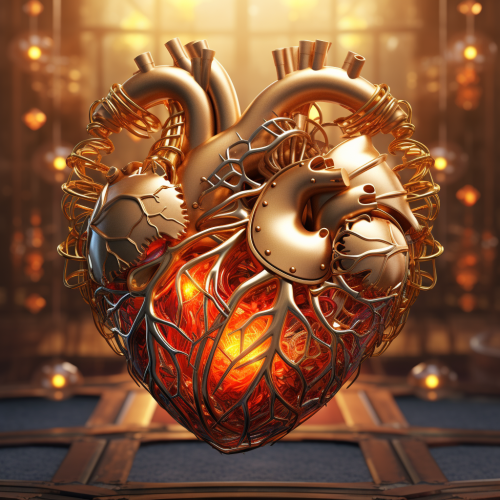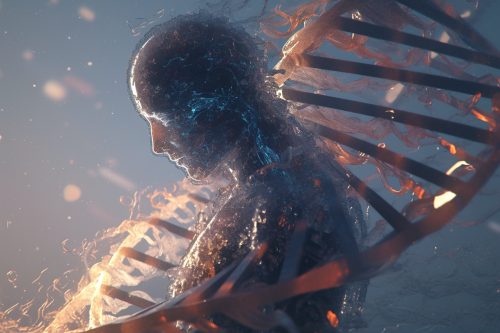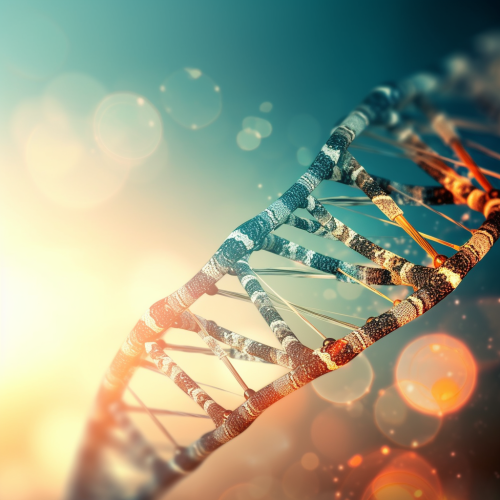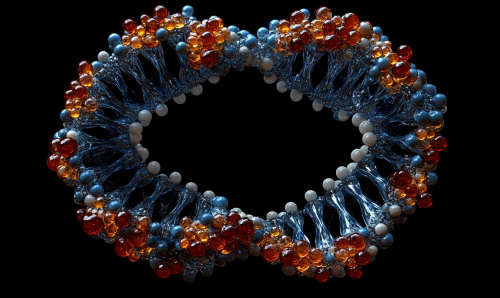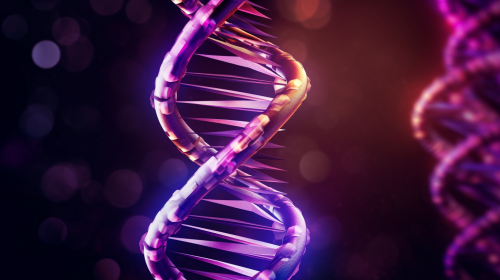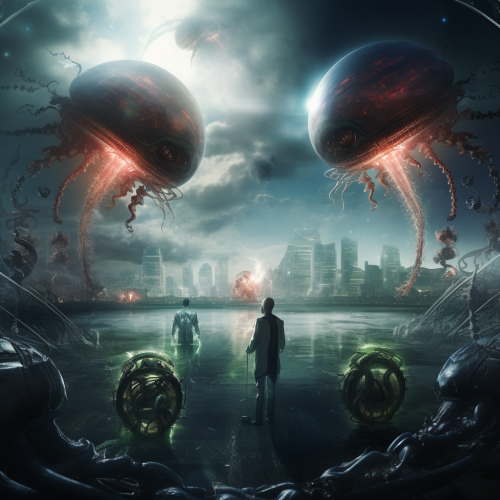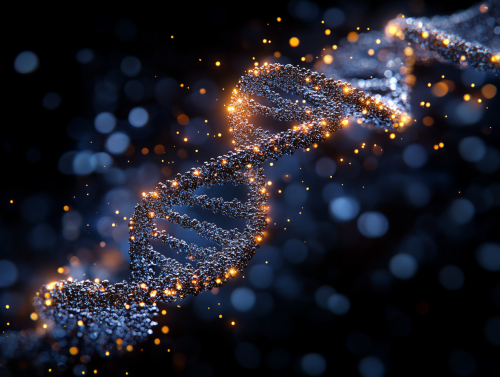DNA strands twisting off horizon
Prompt
License
Free to use with a link to 2moonsai.com
Similar Images
The DNA double helix resembles a twisted ladder or spiral staircase. It is composed of two long strands that coil around each other, each strand made of repeating units called nucleotides. These nucleotides consist of a sugar molecule, a phosphate group, and one of four types of nitrogen bases: adenine (A), thymine (T), cytosine (C), and guanine (G). The two strands are connected by these bases, which pair together in specific ways: adenine with thymine, and cytosine with guanine, forming the rungs of the ladder. The sugar and phosphate groups of each nucleotide form the backbone of the DNA, creating the sides of the ladder. This structure twists into its characteristic helical shape due to chemical bonding forces between the components, allowing DNA to compactly store the genetic information in cells. --ar 3:4 --stylize 750 --v 6.1
I’d love your help bringing a concept to life that explores the fusion of biology and technology. The idea is to visualize the human genome (AGCT base pairs) as it transforms into binary code (0s and 1s), capturing the transition from organic life to digital form in an elegant and abstract way. Imagine a human figure standing in a vast, futuristic space, with strands of DNA gracefully intertwining around their body, slowly morphing into shimmering binary code. This process represents the essence or soul of the figure being etched onto a radiant, futuristic tablet--like an ancient cuneiform tablet, but modern and ethereal, symbolizing the merging of life and technology. The image should feel transcendent, with a color palette of light blues, silver, and iridescent tones, evoking both the fragility of life and the beauty of the digital world. The overall aesthetic should be elegant, thought-provoking, and futuristic--capturing a vision of humanity imprinted onto the fabric of the future. --niji 6
The core of the idea is to imagine what my form would look like if my entire genetic sequence, composed of AGCT base pairs, were translated into a photo-like image of myself, but represented through digital 0s and 1s. The vision is a figure that appears to be composed of intertwining DNA strands, with the sequences of AGCT clearly visible, gradually shifting into shimmering binary code. This transformation would almost mirror a biological feature being transferred into a separate layer of reality, like transcribing my biological traits into a digital form. I would love for the DNA strands and AGCT sequences to be a focal point, appearing organic and flowing around the figure before merging into clean, futuristic binary sequences. The figure should stand in a boundless, futuristic space, with the entire image carrying a sense of elegance and harmony between biology and technology. The atmosphere should evoke a sense of wonder at the convergence of human biology and technology, as if a biological essence is being reflected through the lens of a digital universe. --ar 3:2 --niji 6
detailed photographic style of DNA twisting off into the horizon --style raw
The DNA double helix resembles a twisted ladder or spiral staircase. It is composed of two long strands that coil around each other, each strand made of repeating units called nucleotides. These nucleotides consist of a sugar molecule, a phosphate group, and one of four types of nitrogen bases: adenine (A), thymine (T), cytosine (C), and guanine (G). The two strands are connected by these bases, which pair together in specific ways: adenine with thymine, and cytosine with guanine, forming the rungs of the ladder. The sugar and phosphate groups of each nucleotide form the backbone of the DNA, creating the sides of the ladder. This structure twists into its characteristic helical shape due to chemical bonding forces between the components, allowing DNA to compactly store the genetic information in cells. --ar 5:3 --stylize 750 --v 6.1
Design an image that conveys the elegance and complexity of cellular biology, featuring a stylized representation of a DNA double helix in varying shades of purple, set against a minimalist, monochromatic background. The image should be captured using a Nikon D850 for its exceptional detail and color accuracy, with a 85mm prime lens to ensure sharpness and clarity. The lighting should be soft and even, creating a gentle illumination across the DNA structure, highlighting its intricate patterns and the elegance of its form. The composition should be simple yet powerful, with the DNA helix slightly off-center, creating a dynamic and engaging visual. The background should be a smooth gradient of purple tones, from light lavender to deep violet, adding depth and interest to the image. This photograph should be in high-resolution 16k, perfect for conveying the beauty and sophistication of cellular biology in a visually stunning manner. --ar 16:9 --v 5.1 --style raw --s 750
The DNA double helix resembles a twisted ladder or spiral staircase. It is composed of two long strands that coil around each other, each strand made of repeating units called nucleotides. These nucleotides consist of a sugar molecule, a phosphate group, and one of four types of nitrogen bases: adenine (A), thymine (T), cytosine (C), and guanine (G). The two strands are connected by these bases, which pair together in specific ways: adenine with thymine, and cytosine with guanine, forming the rungs of the ladder. The sugar and phosphate groups of each nucleotide form the backbone of the DNA, creating the sides of the ladder. This structure twists into its characteristic helical shape due to chemical bonding forces between the components, allowing DNA to compactly store the genetic information in cells. --ar 4:3 --stylize 750 --v 6.1
Technical and professional looking icon of DNA hacking, black icon on white background, 16k
three individual strands twisted together from top of imagine to bottom of image, candy colors, pastel background
The DNA double helix resembles a twisted ladder or spiral staircase. It is composed of two long strands that coil around each other, each strand made of repeating units called nucleotides. These nucleotides consist of a sugar molecule, a phosphate group, and one of four types of nitrogen bases: adenine (A), thymine (T), cytosine (C), and guanine (G). The two strands are connected by these bases, which pair together in specific ways: adenine with thymine, and cytosine with guanine, forming the rungs of the ladder. The sugar and phosphate groups of each nucleotide form the backbone of the DNA, creating the sides of the ladder. This structure twists into its characteristic helical shape due to chemical bonding forces between the components, allowing DNA to compactly store the genetic information in cells. --ar 4:3 --stylize 650 --v 6.1

View Limit Reached
Upgrade for premium prompts, full browsing, unlimited bookmarks, and more.
Get Premium
Limit Reached
Upgrade for premium prompts, full browsing, unlimited bookmarks, and more. Create up to 2000 AI images and download up to 3000 monthly
Get Premium
Become a member
Sign up to download HD images, copy & bookmark prompts.
It's absolutely FREE
 Login or Signup with Google
Login or Signup with Google

Become a member
Sign up to download HD images, copy & bookmark prompts.
It's absolutely FREE
 Login or Signup with Google
Login or Signup with Google

Limit Reached
Upgrade for premium prompts, full browsing, unlimited bookmarks, and more.
Get Premium











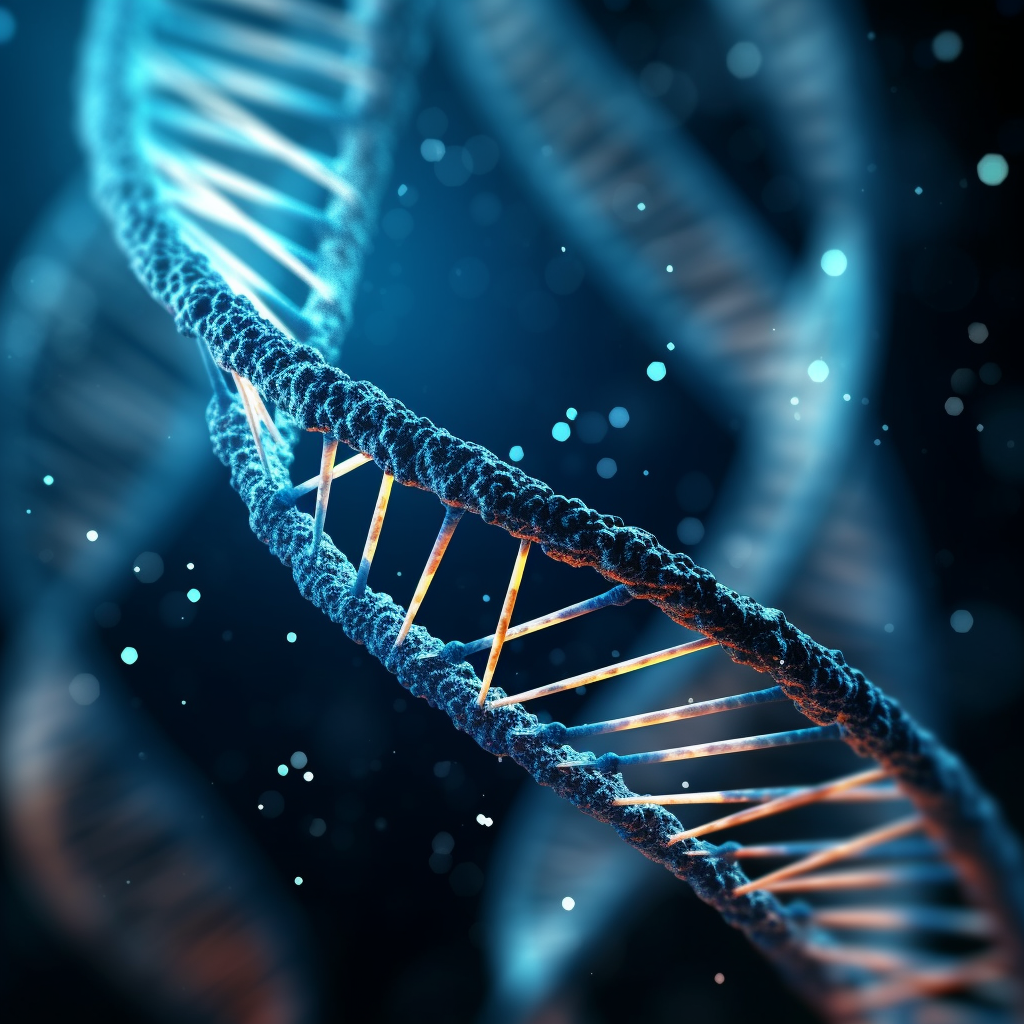












 Download Image (SD)
Download Image (SD)
 Download Image (HD)
Download Image (HD)




